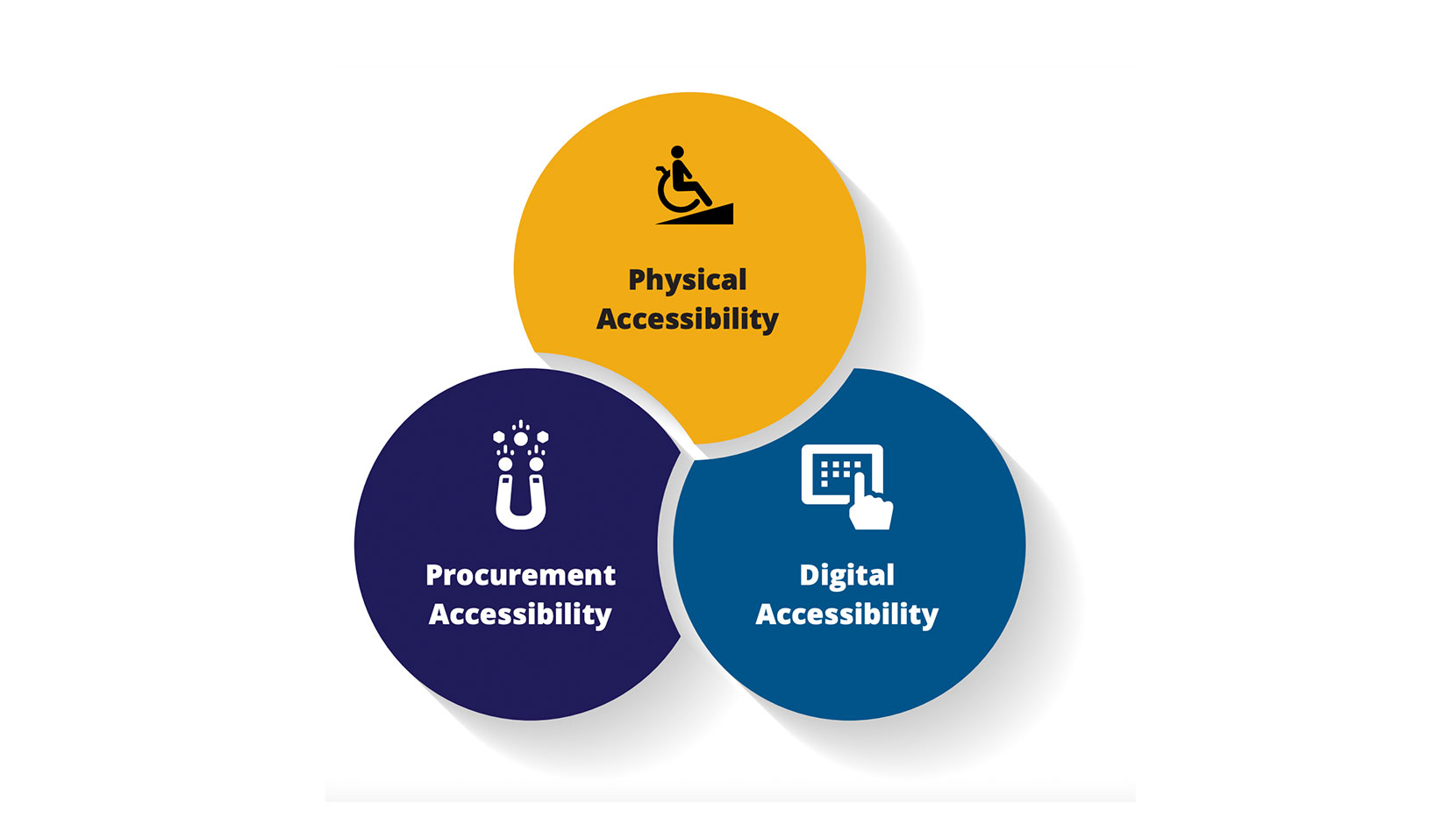Organization-Wide Accessibility: Everyone Plays A Part

For an organization-wide accessibility plan to be impactful, staff at every level must understand and embrace an approach that supports all employees, including those with disabilities.
Physical Accessibility:
helps ensure candidates can fully participate in the job application process and employees with disabilities can perform the essential functions of their role. This includes full access to an office and/or worksite, various equipment and other building features and facilities.
Digital Accessibility:
is a vital component of disability inclusion. In today’s workplaces, technology is one of the central drivers of productivity and success for all workers. When software, apps, online documents and other technology are not accessible, members of the workforce are excluded and can face barriers to employment.
Procurement Accessibility:
encompasses both physical and digital accessibility, and reflects a company’s commitment to ensuring an accessible environment for all, including employees and customers. Employers can promote inclusion by prioritizing vendors who offer accessible goods and services.
Fully accessible workplaces enhance organizations by:

It’s all about teamwork—everyone’s involvement matters!
Employees:
Help ensure the content produced, the systems maintained and the meetings organized are accessible.
Leadership:
Establish workplace expectations and policies around accessibility, and promote a culture of inclusion.
HR Professionals:
Lead efforts by ensuring accessibility is integral to the recruitment and hiring process.
Supervisors:
Address day-to-day accessibility needs by ensuring individuals can request and receive reasonable accommodations.
Procurement Officers:
Build in accessibility as part of the procurement process.
Information Technology, Web Development and Design Staff:
Ensure all workplace technologies are universally accessible and assistive technologies operate with current workplace technologies.
Marketing and Public Relations Specialists:
Deliver proper communication on accessibility to internal and external audiences in an accessible format.
Legal Counsel and Regulatory Team Members:
Ensure understanding of and compliance with accessibility responsibilities.
Strategies to engage all employees in advancing workplace accessibility:
- Develop and sustain an organization-wide accessibility plan.
- Implement the Partnership on Employment & Accessible Technology’s (PEAT) Accessibility Staff Training for Specific Roles.
- Establish organizational values that embrace the “Accessibility is Everyone’s Responsibility” mindset.
- Review EARN’s Creating an Accessible and Welcoming Workplace resource to address physical accessibility, technological accessibility and attitudinal awareness goals for full accessibility in the workplace.